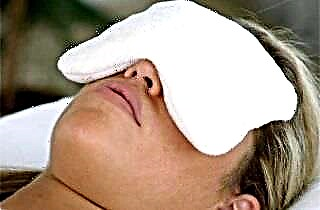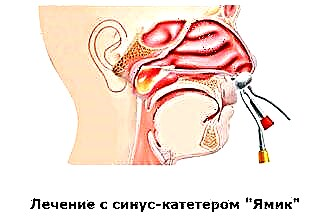A bruise is a nose injury that no one is immune from. It can be received by both a woman and a man. Moreover, regardless of age. However, most often the nose is injured by representatives of the younger generation. There are plenty of situations for this: outdoor games, falling from a bicycle, skateboard, rollerblades or sledges. If a child has just learned to walk, he can bump his nose well, tripping over an obstacle that is still insurmountable for him. Also, people of venerable age can be attributed to the risk group. For them, the main reasons for such an injury are ailments that impair coordination and balance, weakness, dizziness, and sudden surges in blood pressure. A bruised nose is considered an occupational injury in boxers and those involved in various types of martial arts.
In winter, the risk of injury to the prominent part of the face increases several times. Because of the ice, people fall more often - and not always successfully. In addition, skating and sledging can also lead to severe blows to your face.
How to recognize
 The severity of the damage depends on several factors. For example, on how strong the blow to the nose turned out to be, how high the strength of the nasal septum was, and also on age.
The severity of the damage depends on several factors. For example, on how strong the blow to the nose turned out to be, how high the strength of the nasal septum was, and also on age.
It is possible to understand that the nose is bruised by a number of signs characteristic of this injury. It is important to know them in order to take appropriate measures in time.
Symptoms of a common bruise are very similar to those of a broken nose. And yet it is necessary to learn to distinguish between them. Remember, the more severe the damage to cartilage, bones, and soft tissue, the more pronounced the signs of injury.
In particular, a bruised nose is manifested:
- Sharp pain of high intensity (it becomes much stronger if you even just touch the injured area). Note that the pain syndrome with a bruise is sometimes much more pronounced than with a fracture.
- Puffiness (a lump appears). It appears almost instantly and gradually increases.
- Complicated nose breathing - due to the resulting swelling and blockage of the nasal passages with blood clots.
- Bruises that inevitably appear under the eyes and in the nose. This is the result of a subcutaneous hemorrhage due to a stroke.
- Lachrymation (this is an involuntary phenomenon, not crying).
- Bleeding from the nasal passages of varying degrees of intensity. Optional feature. If the force of the blow was insignificant, and the vessels were strong enough, everything can do without blood.
The highest severity of symptoms is observed within 2-3 days after injury. Then they gradually disappear, giving way to the rehabilitation process.
 If the nose is broken, deformation will be evident. In addition, the fracture is often accompanied by pain shock, in some cases, short-term loss of consciousness. However, with a bruise, the nose swells so much that sometimes it is not clear whether this is an ordinary bump or the same deformation. The doctor will be able to establish an accurate diagnosis only after 3-4 days, when the lump is slightly reduced. At the same time, modern technology today makes it possible not to waste time waiting, but to immediately find out if the nose is bruised or still broken. To do this, you will need to go through the X-ray procedure, and in some cases - computed tomography, which is more informative.
If the nose is broken, deformation will be evident. In addition, the fracture is often accompanied by pain shock, in some cases, short-term loss of consciousness. However, with a bruise, the nose swells so much that sometimes it is not clear whether this is an ordinary bump or the same deformation. The doctor will be able to establish an accurate diagnosis only after 3-4 days, when the lump is slightly reduced. At the same time, modern technology today makes it possible not to waste time waiting, but to immediately find out if the nose is bruised or still broken. To do this, you will need to go through the X-ray procedure, and in some cases - computed tomography, which is more informative.
A bruised nose is a health hazard if it causes fainting, dizziness, and severe bleeding that cannot be stopped for a whole hour.
The bruises under the eyes, which look like dark glasses, should also be alerted. They usually indicate a more serious injury or concussion. Doctors refer to such a bruise of the nose to craniocerebral trauma. To find out how severe the injury turned out to be, and whether anything else has suffered, it is imperative to consult a doctor. And the faster you do it, the better.
If the nose is bruised child
 In no case should such an injury in a child be ignored. After all, if left unattended, it can lead to adverse consequences. If the baby hits his nose, in most cases there is swelling of the soft tissues of the injured area (a hematoma can also occur under the eyes after a blow) and slight bleeding. If the bruise is severe, concussion and other unpleasant complications are possible.
In no case should such an injury in a child be ignored. After all, if left unattended, it can lead to adverse consequences. If the baby hits his nose, in most cases there is swelling of the soft tissues of the injured area (a hematoma can also occur under the eyes after a blow) and slight bleeding. If the bruise is severe, concussion and other unpleasant complications are possible.
Parents should be aware of what to do when their child has hit his nose hard. First of all, you should visit the doctor with the baby as soon as possible. The fact is that damaged soft tissues and swollen mucous membranes can significantly complicate nasal breathing.
If, after a bruise, the child began to breathe heavily, most likely, a hematoma has appeared on his nasal septum. In other words, there was a detachment of the mucous membrane with the penetration of blood into the formed cavity. Due to the hematoma, the lumen of the nasal passages narrows, so it becomes more difficult to breathe. In addition, it is an excellent breeding ground for harmful microorganisms. And this already threatens with suppuration and abscess of the nasal septum.
Drugs and methods of treating a bruised nose in a child can only be recommended by the attending physician, having previously examined the baby. Self-medication is strictly prohibited.
Complications and consequences
If you treat a bruised nose in a timely and competent manner, you can not be afraid of the development of any complications. But if the injury turned out to be too complex, an infection got into the wound, incorrect measures were taken, and even not immediately, you will have to be treated under the strict supervision of doctors.
 The most common and health hazardous complication of a bruised nose is the addition of an inflammatory process. When an infection enters the area with a hematoma, the body temperature rises, the pain becomes more intense, and there is a feeling of distention in the nose. These are the main symptoms of the onset of inflammation. To avoid its development, it is necessary to make a puncture. The main indication for puncture is a large hematoma, which takes a long time and does not completely dissolve.
The most common and health hazardous complication of a bruised nose is the addition of an inflammatory process. When an infection enters the area with a hematoma, the body temperature rises, the pain becomes more intense, and there is a feeling of distention in the nose. These are the main symptoms of the onset of inflammation. To avoid its development, it is necessary to make a puncture. The main indication for puncture is a large hematoma, which takes a long time and does not completely dissolve.
If, nevertheless, the inflammatory process has begun, its treatment should be as intense as possible. After all, this complication can lead to very serious consequences - for example, meningitis or brain abscess.
Other consequences that most often result from bruises include:
- a constant runny nose, which significantly complicates breathing (because of it, a person snorts, whistles and snores);
- vasomotor sinusitis, rhinitis and sinusitis, occurring in a chronic form;
- deformation of the nose with a change in its size, as well as curvature of the septum.
Treatment with folk remedies
Folk remedies help to eliminate the unpleasant symptoms of a bruised nose and avoid complications. True, you need to take into account that cold is needed in the first days after injury. But the warming up procedures are permissible no earlier than the third day. In addition, all of the following can be used only after consulting a doctor.
 To make your nose less sore, you can use a decoction or alcohol tincture from buttercup flowers. With these means, you should gently rub the bruised area. This procedure should be done 2 times a day.
To make your nose less sore, you can use a decoction or alcohol tincture from buttercup flowers. With these means, you should gently rub the bruised area. This procedure should be done 2 times a day.- White cabbage can help reduce inflammation and swelling. Take a cabbage leaf and remember it a little to let the juice go. Apply to the bruised area, securely fixing with a bandage. You need to change such a compress hourly.
- Raw potatoes are a great alternative to kale as they do the same job just fine.You can make night compresses from it, after rubbing or cutting into thin slices.
- For the subsequent warming of the bruised nose, a compress of boiled mashed beans is suitable. The duration of one session is 15 minutes. Then the compress can be washed off with water at a comfortable temperature.
- To get rid of unattractive bruises, you should use hot Epsom salts. If you don't have this ingredient, you can use heated sand, regular table salt, and a hard-boiled chicken egg. Such warming up should be done no more than 3 times a day. Please note that you cannot go out into the cold air after them.
- Natural honey will help relieve pain and reduce inflammation. To make a compress, you will need to mix honey and finely chopped aloe leaves in a 1: 1 ratio. It should be applied to the injured area no more than 3 times a day. In addition, the product prepared for the compress is suitable for treating wounds and abrasions - so they heal faster.
The above methods retain their effectiveness with a slight injury. If the injury is severe or with complications, such remedies will not help. It will be necessary to apply the medicines prescribed by the doctor.
Let's summarize
 Only a traumatologist or surgeon can establish an accurate diagnosis and type of injury. The conclusion of a specialist is based on visual and manual examination, as well as information about how the injury occurred. In addition, the doctor will collect an anamnesis, because the choice of treatment tactics, in particular, depends on the presence or absence of diseases of the nasopharynx.
Only a traumatologist or surgeon can establish an accurate diagnosis and type of injury. The conclusion of a specialist is based on visual and manual examination, as well as information about how the injury occurred. In addition, the doctor will collect an anamnesis, because the choice of treatment tactics, in particular, depends on the presence or absence of diseases of the nasopharynx.
In certain cases, there is a need for technological research methods. These include radiography, endoscopy, ultrasound echography and computed tomography.
Depending on the complexity of the injury, the victim is recommended to switch to a sparing day regimen. If a child is injured, it is advisable to adhere to bed rest for a week. Glasses are allowed to be worn only when the swelling and soreness have completely disappeared. Physical activity during the rehabilitation period will have to be avoided. It is also forbidden to visit the bathhouse and sauna.

 To make your nose less sore, you can use a decoction or alcohol tincture from buttercup flowers. With these means, you should gently rub the bruised area. This procedure should be done 2 times a day.
To make your nose less sore, you can use a decoction or alcohol tincture from buttercup flowers. With these means, you should gently rub the bruised area. This procedure should be done 2 times a day.

